Sports
NCAA closer to letting athletes bet on pro sports
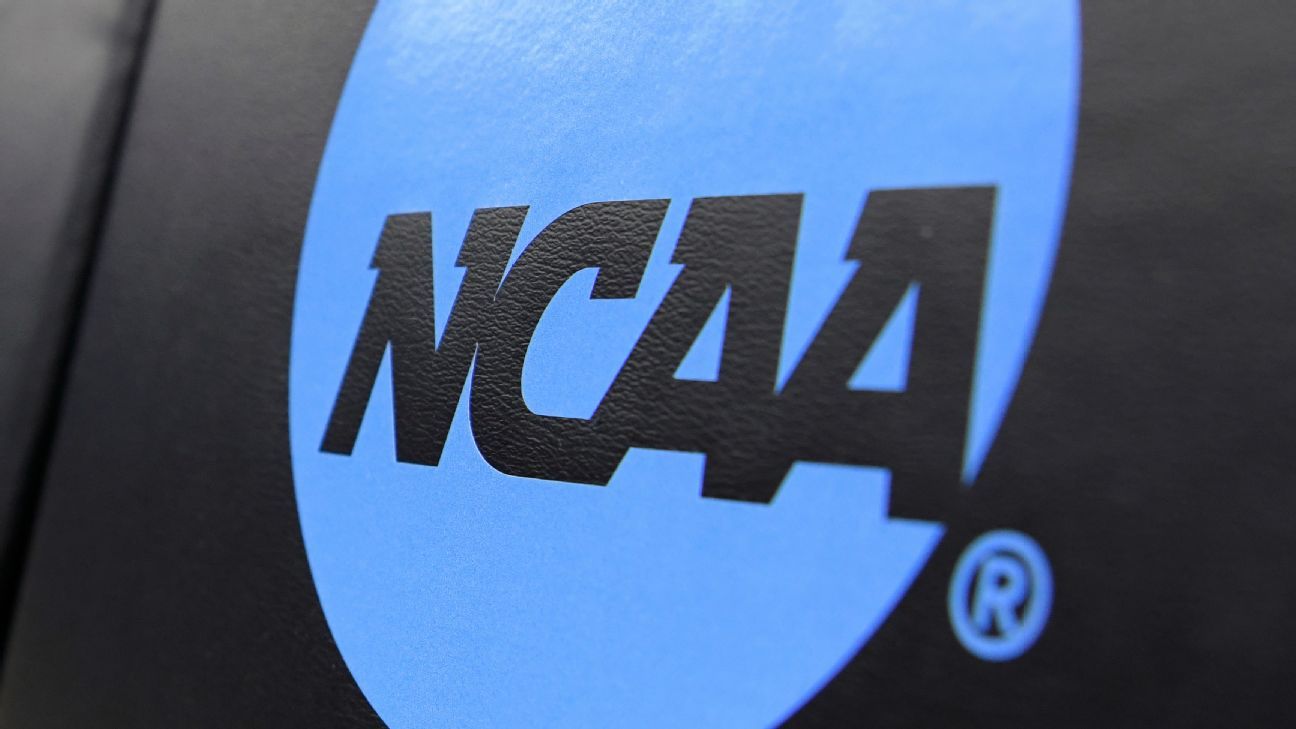
The NCAA Division I Administrative Committee on Wednesday adopted a proposal to allow student-athletes and athletic department staff to bet on professional sports, a shift in a long-held policy that had become difficult to enforce with the spread of legal sports betting in the United States.
Divisions II and III are expected to consider the proposal in their respective meetings at the end of October, the NCAA said. If approved by the lower divisions, the rule would go into effect Nov. 1.
Athletes and athletic staff have been prohibited from betting on any sport, professional or collegiate, that was sponsored by the NCAA. Betting on college sports will remain off limits.
The potential change comes as the NCAA has faced an increasing number of alleged betting violations by student-athletes in recent years. In September, the NCAA announced that a Fresno State men’s basketball player had manipulated his own performance for gambling purposes and conspired with two other players in a prop betting scheme. The NCAA is investigating 13 additional student-athletes from six schools regarding potential gambling violations dealing with integrity issues.
“The enforcement staff continues to investigate and resolve cases involving sports betting quickly but thoroughly,” Jon Duncan, NCAA vice president of enforcement, said in a release announcing the proposed rule change. “Enforcement staff are investigating a significant number of cases that are specifically relevant to the NCAA’s mission of fair competition, and our focus will remain on those cases and those behaviors that impact the integrity of college sports most directly.”
NCAA officials emphasized that the rule change is not an endorsement of sports betting and that they remain concerned with the risks associated with all forms of sports gambling. The change was supported by the Division I Student-Athlete Advisory Committee.
“Abstinence-only approaches to social challenges for college-aged individuals are often not as successful as approaches that focus on education about risks and open dialogue,” Dr. Deena Casiero, the NCAA’s chief medical officer, said in the release.
Sports
Former Penn State, Ohio State player charged with homicide, DUI after girlfriend dies in fatal ATV crash
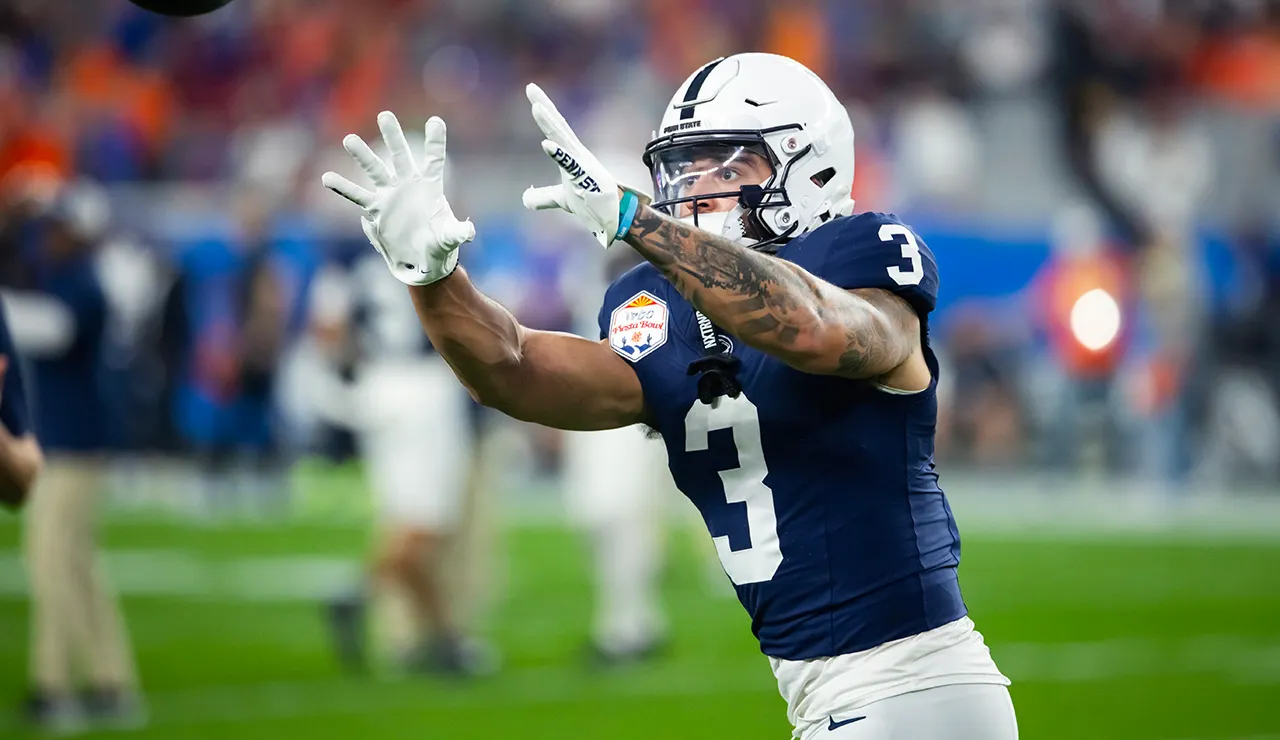
NEWYou can now listen to Fox News articles!
A former Penn State football player is facing charges relating to an ATV crash back in May that injured him and killed his girlfriend.
Julian Fleming, 24, and Alyssa Boyd, 23, were driving down a rural road in Bradford County near the Pennsylvania-New York border on the night of May 22 when they struck a deer, according to Pennsylvania State Police.
Documents obtained by TMZ Sports, though, stated that Fleming had a blood-alcohol level of .118 shortly after the crash.
CLICK HERE FOR MORE SPORTS COVERAGE ON FOXNEWS.COM
Penn State Nittany Lions wide receiver Julian Fleming against the Boise State Broncos during the Fiesta Bowl at State Farm Stadium. (Mark J. Rebilas/Imagn Images)
Fleming was charged with homicide by vehicle, driving under the influence and aggravated assault by vehicle.
“In my view, the prosecution here took a tragic and unavoidable accident and turned it into a crime when the facts don’t support that,” Fleming’s attorney, David Bahuriak, told TMZ Sports. “The facts don’t support criminal homicide.”
Neither Fleming nor Boyd was wearing safety equipment, police said, via The Citizens’ Voice.
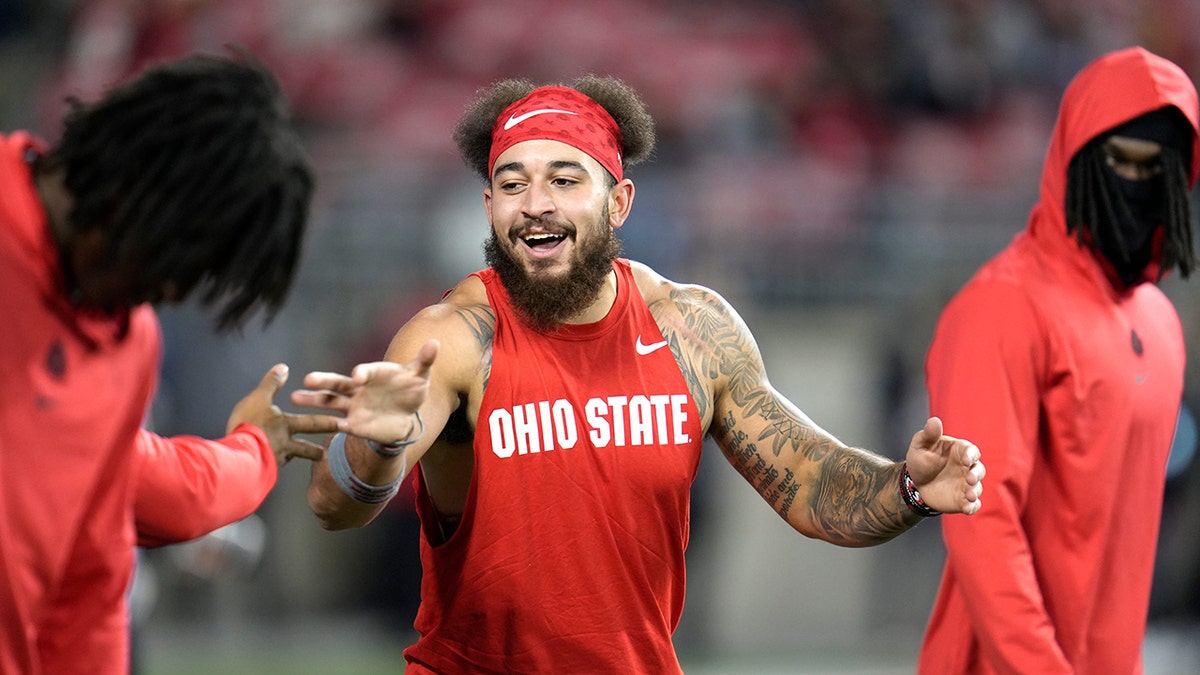
Ohio State Buckeyes wide receiver Julian Fleming jokes around with teammates during an NCAA football game against Michigan State University at Ohio Stadium. (Brooke LaValley/Columbus Dispatch / USA Today Network)
Fleming was a standout wide receiver who played for the Ohio State Buckeyes from 2020 to 2024. He committed to Ohio State after he was a standout at Southern Columbia High School in Pennsylvania. He was the No. 1 prospect out of the state in 2020.
He transferred to Penn State before the 2024 season to finish his NCAA eligibility.
He played in 16 games for the Nittany Lions last season. He had 14 catches for 176 yards and a touchdown. At Ohio State, he had 79 catches for 963 yards and seven touchdowns in 38 career games.
Fleming signed with the Green Bay Packers as an undrafted free agent. However, his contract was rescinded after he failed a physical with the team.
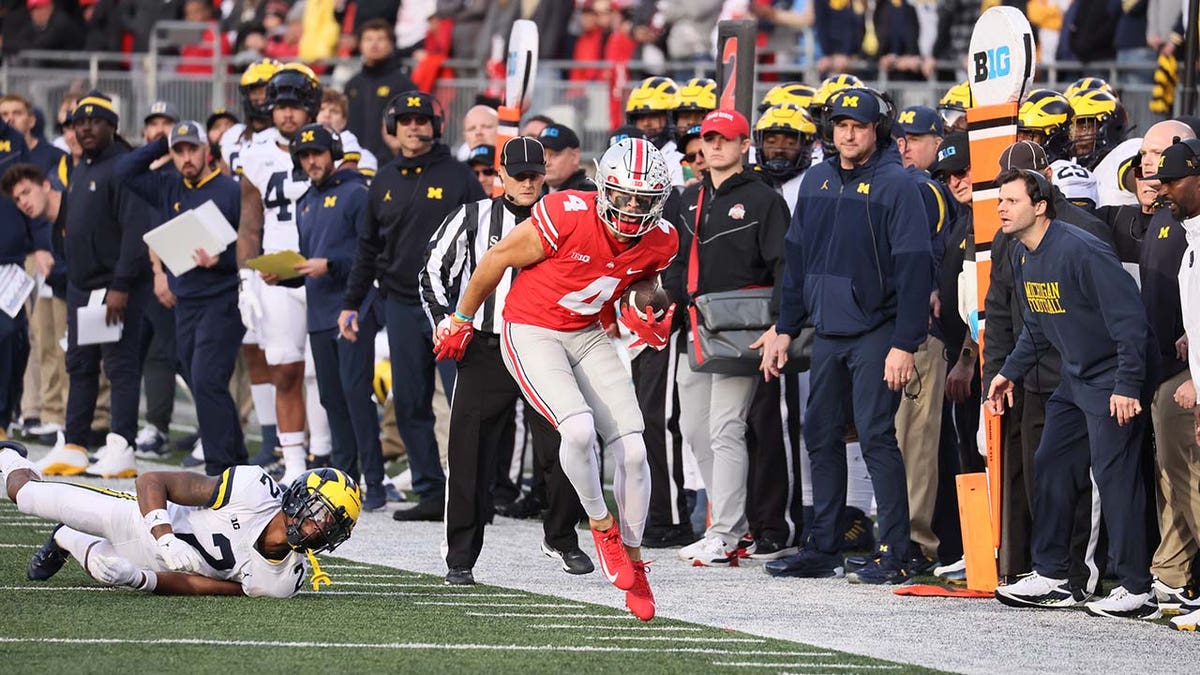
Ohio State’s Julian Fleming (4) runs with the football vs Michigan at Ohio Stadium. (David E. Klutho/Sports Illustrated via Getty Images)
CLICK HERE TO GET THE FOX NEWS APP
Boyd suffered “extensive injuries” in the crash, police said, via the New York Post, and died at the scene. She was a student at the University of Alabama.
Fox News’ Ryan Gaydos contributed to this report.
Follow Fox News Digital’s sports coverage on X, and subscribe to the Fox News Sports Huddle newsletter.
Sports
‘You could feel it like in your bones’: Aaron Judge meets his October moment at last

NEW YORK — Never were the questions of Aaron Judge‘s fitness for October particularly fair, but that’s life for the biggest man in the biggest city whose biggest failures had come at the biggest times. The burden of greatness is heavy. The burden of greatness in New York is planetary. And for those unleashing screeds on Judge’s postseasons — on hot take shows and sports-talk radio and in bars and at family dinners and everywhere, really, that anyone talks about the Yankees — it was never about whether they were fair. After all, his performances had been undeniably foul.
Judge never paid any of this any mind because he does not wire himself to do so. He cares about winning. He cares about success. He cares more than anyone who criticizes him, mocks him, derides him, leans into his past performances as if they’re predictive of an unknowable future. Judge always separated those struggles, not just because he needed to but because it is how he lives, purposely boring and boringly purposeful. He believed the moment would present itself and he would meet it. And why wouldn’t he think that? Every other endeavor in his baseball life had treated him that way.
Regardless of how the American League Division Series between the Yankees and Toronto Blue Jays breaks, what Judge did Tuesday night was the sort of thing that should put to rest questions about his October aptitude. It won’t, because it never could, but the wide-eyed, wonderstruck, childlike gawking of everyone in the Yankees’ clubhouse told the story of Tuesday night’s season-saving 9-6 victory against the Blue Jays in which Judge left jaws agape.
Poor Louis Varland. The right-handed reliever entered in the fourth inning to protect the Blue Jays’ 6-3 advantage in a game that could have clinched their spot in the AL Championship Series. He fooled Judge on a 90 mph curveball and then blew a 100 mph fastball by him and then threw another fastball at 100, up and in. Like, really in. Like, 5.9 inches off the inner corner of the plate, at triple digits, with tremendous carry, an absolute nightmare of a pitch for any hitter at any time in the game’s history to touch, let alone punish.
Nearly 400 feet later, when the ball banged off the left-field foul pole — the one place in Judge’s world where something foul is indeed fair — no one on the field could believe it. The absurdity of it all — manipulating his 6-foot-7, 282-pound body to so thoroughly alter his standard bat path, turn on 100 and keep it fair — was not lost on Varland, the Yankees who kept watching replays of the swing in the dugout, or the 47,399 at Yankee Stadium who bore witness.
“He made a really good pitch look really bad,” Varland said.
All postseason, Judge has been doing that. His 11 playoff hits lead MLB. For all of the ugliness of striking out with the bases loaded in Game 1 of this ALDS, his at-bats have been competitive all October. What he did to Varland was the culmination, precisely what the Yankees needed to see another day.
“You could feel it like in your bones,” Yankees reliever Tim Hill said. “It was crazy. It was amazing. I mean, just the pitch that he hit. All that. I’m sure my guy over there on the other side is questioning everything.”
Yes, pitching to Aaron Judge is the sort of thing of which existential crises are made. Before Tuesday, he had never hit a pitch 100 mph or faster for a home run. He hit 53 home runs this season — and none on a pitch outside the rulebook strike zone. Before Tuesday, the Blue Jays were 39-0 this season in games during which they led by at least five runs, too.
It’s impossible to overstate how out of character this was for Judge. He prides himself on good swing decisions because he knows how important they are. On pitches in the strike zone this season, Judge batted .400, 40 points higher than the next-best hitter. He slugged .867, 115 points higher than Shohei Ohtani. In his 214 plate appearances this year that ended on pitches outside of the rulebook zone, Judge batted .109 and drove in one run. All year. He didn’t have a single extra-base hit on such pitches.
One of the biggest home runs in the career of a two-time MVP favored to win a third this year was on something he never does. And if a willingness to exit his comfort zone and in the process do something that few in the history of baseball would be physically capable of doing doesn’t show that Judge isn’t just capable of success in October but destined for it, well, nothing would. And that’s fine with him. He knows emotion is the fuel that feeds the prognostications of inevitable letdown, not consistency or logic.
“I get yelled at for swinging at them out of the zone, but now I’m getting praised for it,” Judge said. “It’s a game. You’ve got to go out there and play. I don’t care what the numbers say or where something was at. I’m just up there trying to put a good swing on a good pitch, and it looked good to me.”
Inside the Yankees’ clubhouse, they’ve been yearning for Judge to have a game like this, to further validate their unflinching belief in him. The past is indisputable. Judge’s postseason OPS is more than 250 points lower than during the regular season. The Yankees haven’t won a championship during his 10 years in the big leagues. It’s real, and it’s regrettable, and it’s part of his legacy. It is also not the ink with which the future is written, which is why Aaron Boone, the Yankees’ manager with whom Judge is extremely close, said: “I don’t worry about Aaron and his state, even understanding all the outside noise.”
From Boone’s perch atop the dugout, he had the perfect view of the left-field foul pole. As the ball carried through the night, Judge stood near home plate. He didn’t pull a Carlton Fisk, trying to wave it fair. He just waited for it to land.
And when it did, helping raise his batting average this postseason to .500 and his OPS to 1.304 — nearly 300 points better than his career regular-season OPS, for the record — Judge uncorked a mini-bat flip and started his jog around the bases. When he got back to the dugout, teammates lined up and greeted him with a full high-five line.
“He’s the real deal, and as beloved a player as I’ve ever been around by his teammates,” Boone said. “They all admire him, look up to him, respect him, want his approval, and that’s just a credit to who Aaron is and how he goes about things.”
After slapping the last hand, Judge took one more step toward the end of the dugout. There awaited a television camera. Judge looked at it, pointed and turned around. He then pirouetted back and gave the audience one more stare. This was not an accident. Nothing Judge does is. It was a message, a reminder, a siren for everyone that didn’t believe.
The Yankees were still alive. And as long as that’s the case, he plans on carrying them. Even in October.
Sports
The biting barb that spurred Chelsea Gray and the Aces
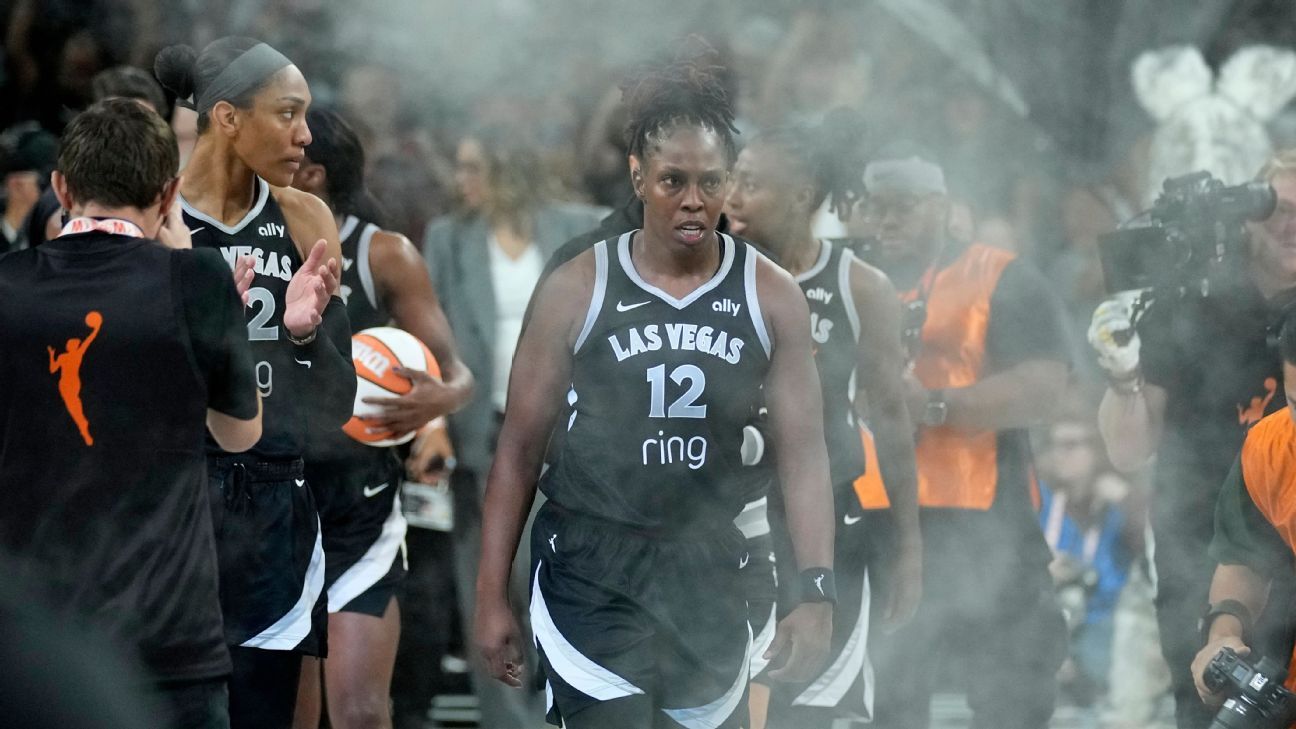
CHELSEA GRAY HEARS A’ja Wilson talk. A lot. About trophies. About buckets. About blocks. About boards. But of the millions of words her outspoken teammate has uttered throughout their five seasons and two WNBA championships together as teammates on the Las Vegas Aces, 11 stand out to Gray.
She heard them in June, when nothing was going right for the Aces or Gray or Wilson. Las Vegas, among the preseason favorites to win the 2025 title, was hovering around (or below) .500, and Gray remembers Wilson calling her out.
“There’s no way I should ever have more assists than you,” Gray recalls Wilson telling her.
The words stung.
Through the end of June, the reigning WNBA MVP had out-assisted the “Point Gawd” in six games, and the Aces turned the calendar to July with an 8-8 record. At the time, the 32-year-old Gray, who has filled hours of video with flashy passes over the course of her career, averaged 4.3 assists.
“Our relationship is super honest and raw,” Gray said. “I’ve cried in front of her. She’s cried in front of me.”
From July through the end of the regular season, Gray averaged 7.1 assists, including a season-high 14 in an August game against Dallas when the Aces were in the middle of a 16-game winning streak. In the playoffs, Gray pushed that average up to 7.8, the highest postseason average in her career. She has had 10 assists in three of the Aces’ 10 postseason games so far.
Her response to Wilson’s challenge has helped guide the Aces to a 2-0 series lead over the Phoenix Mercury in the WNBA Finals, two wins away from their third championship in four years. Game 3 is Wednesday in Phoenix (8 ET, ESPN).
“It’s that kind of bond that we can have conversations in the middle of the game,” Gray said. “And we understand where we’re coming from.”
GRAY TAKES THE HANDOFF along the sideline and heads to an open spot. She sits down on the bench wielding a marker and a dry-erase board. It’s Game 1 of the Finals and the score is tied 23-23 with 8:49 left in the second quarter. Gray draws up the play she wants so her teammates can see her thoughts.
After the Aces’ 79-76 victory, Gray is quick to clarify that she isn’t using coach Becky Hammon’s personal board. Not even she is that bold. “They have two boards back there,” Gray said. The one she used doesn’t technically belong to Gray. She just happens to be the one who asks an assistant coach for it.
Gray started taking control of the board in huddles and timeouts from time to time when she came to Las Vegas in 2021 after spending her first six seasons in Connecticut and Los Angeles.
She already had built a reputation as a player with extraordinary vision and a high IQ, and she has only built on that since.
“When she takes the clipboard, everybody locks in,” said Aces guard Dana Evans, who had 21 points in the Game 1 win. “We know that she’s about to show valid points. She’s not doing it just to do it.”
For Gray, it’s about helping her teammates see what she or Hammon are talking about. It’s something she has done more frequently this year.
“They have to see it sometimes on the board rather than just saying it,” Gray said. “It’s made me a better player and a better leader, to be able to explain stuff. And people listen. It’s allowed our huddles to be a little bit tighter.”
Ceding some control to Gray is an easy decision for Hammon when the results are buckets. Hammon may call one out of bounds play, but if Gray sees something different, she’s empowered to make a different one.
That was the case during Game 3 of the Aces’ semifinal series against the Indiana Fever. With 3.6 seconds left in the third quarter, the referee handed Gray the ball to inbound from the sideline on their side of half court. Gray recognized that Jackie Young had leverage on her defender, who’d inadvertently given Young a free run to the basket. Young took off, and Gray launched the ball down the court. It dropped into Young’s hands in stride and she laid it in.
“My thing is, I always want them to have an aggressive nature,” Hammon said. “These possessions where it’s like they’re running routes over the top, that’s the kind of pace I want all the time. So when they do it without me saying it, I love it.”
GRAY SNAGS THE BALL out of the air and turns up court. The Aces lead by 17 midway through the fourth quarter of Game 2. As Gray trots toward the Aces’ basket, Young flanks her on the outside. Young gets a step ahead of Mercury guard Kahleah Copper and turns up the speed.
Gray sees the beginning of separation and turns her head away from Young as she drops a perfectly weighted bounce pass past Copper’s outstretched fingers. Young scoops up the ball in stride and lays it in for two of her 32 points on the day. The basket is Gray’s 10th assist, marking her second career Finals game with 10 points and 10 assists. Only three other players have multiple such games in their careers: Alyssa Thomas, Courtney Vandersloot and Sue Bird.
Gray finished with 10 points, 10 assists, 8 rebounds, 3 steals and 3 blocks in the Aces’ 91-78 Game 2 win.
“She does so many little things,” Hammon said Sunday. “Her passing is elite, but it’s all the other little things that she’s doing that really helped us win the basketball game.”
A year ago, Gray was working her way back from a fracture in her left foot suffered during the 2023 WNBA Finals. She lacked her usual mobility and power. She couldn’t get the separation she needed for her pinpoint passes, and she couldn’t get the lift she needed to hit her fadeaway jumper. The Aces lost to the eventual champion Liberty in the semifinals.
Gray experienced injuries at the end of her college career at Duke that bled into the beginning of her professional career. A right kneecap fracture sidelined her for the entirety of her 2014 rookie season with Connecticut. But until that foot fracture, she hadn’t been seriously injured as a pro, and she’d never returned midseason before.
She wasn’t herself physically last season, but Gray said that has changed this year. She said she’s in her best shape since the 2023 championship run.
“It really helps our team,” Gray said. “I’m able to play for longer stints at a high level both offensively and defensively.”
Gray, who will play in her 20th WNBA Finals game on Wednesday, the most among active players, is showing why she is the only pure point guard to ever win Finals MVP, which she did in 2022. She is shooting 45% from 3-point range this postseason, up from 37% during the regular season, and her best postseason percentage since that 2022 run. Her hands-on defense is creating additional opportunities and possessions. Gray averaged 1.4 steals in the regular season, but is averaging 2.2 steals in the postseason.
Mercury assistant Kristi Toliver knows how difficult it can be to slow down Gray. Toliver watched her development up close when Gray was the starting point guard in L.A. for the 2016 season, Gray’s first in a Sparks uniform.
“She’s fearless,” Toliver said. “She’s clutch and wants that moment. She wants that smoke.”
What Gray doesn’t want is another game where Wilson can point out her lack of production. If Gray were so inclined, she could rib the co-defensive player of the year about out-blocking her in Game 2. It is, after all, the kind of relationship they have. The kind of relationship champions have.
“She’s always going to be her true self, and it allows you to be your true self,” Wilson said. “I think that has always been our friendship and our bond. She’s calm through the storm. I’m so grateful for her to be our point guard.”
-

 Business1 week ago
Business1 week agoTop stocks to buy today: Stock market recommendations for September 30, 2025 – check list – The Times of India
-

 Business1 week ago
Business1 week agoYouTube to pay $24.5m to settle Trump lawsuit over Capitol riot
-

 Fashion1 week ago
Fashion1 week agoBioFibreLoop spins breakthrough in Lignin-based sustainable textiles
-

 Fashion1 week ago
Fashion1 week agoEU–Indonesia CEPA to unlock $352 mn for European sports industry: FESI
-

 Tech1 week ago
Tech1 week agoSamsung Promo Codes: 30% Off in October 2025
-

 Fashion1 week ago
Fashion1 week agoDutch producer confidence improves in Sept but stays negative
-

 Tech1 week ago
Tech1 week agoSound Machines Can Be a Game-Changer For Light Sleepers—Here Are Our Tested Picks
-

 Business1 week ago
Business1 week agoChinese woman convicted in UK after ‘world’s biggest’ bitcoin seizure






